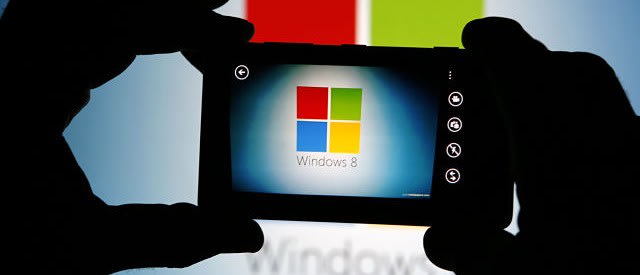
Microsoft attempted something different and daring with Windows 8. It introduced a whole new interface and means of interaction with your PC that was identical to a smartphone or tablet. It threw out the “Start” menu and mouse-driven interface people had used for decades in favor of a touch-driven interface with tiles, some of which received active information updates.
And people hated it.
“They tried to get their entire audience to jump from a UI [user interface] they were comfortable with to a brand new one with a serious learning curve,” California-based Creative Strategies tech analyst and president Tim Bajarin said. “Had they done a more transitionary product, especially keeping the Start button, I don’t think the impact and perception would have been as bad.”
By removing the Start button, which had been a Windows fixture since Windows 95, Microsoft wasn’t just introducing a new way of using the operating system — it was trying to force people away from the only one they had known for two decades.
The result was that Windows 8 was slaughtered in the court of public opinion, often compared to the much-maligned Windows Vista released in 2006. It was an incorrect comparison; Vista was a technological hairball, a truly awful piece of software that often failed when people tried to install it on their PCs.
Windows 8 was technically sound. No one complained of crashing, slow performance or old apps not working on it. People noted it was actually a tad faster than Windows 7, they just hated how it looked. The result was slow sales for Windows 8, but Windows 7, the OS it was supposed to replace, kept selling like hotcakes.
“Its distinguishing feature was support for touchscreens but also legacy applications,” Endpoint Technologies President Roger Kay said. Endpoint is a Boston-based market research firm. “It ended up being a Frankenstein. So the good parts, like being a little faster and more reliable and more secure were almost totally invisible to the end user. So you could tell people it was faster and more reliable and they said ‘I don’t know how to use it.’”
Kay said the beating Windows 8 took in the tech press hurt, but users also hated it. Microsoft released a public beta for anyone to download and use on February 29, 2012, and released the product in October, 2012. During that time, in all the public Windows forums, “consumers were gnashing their teeth and stomping their feet about it. It was vilified in public forums,” Kay said.
The old guard who came up with Windows 8 and refused to listen to beta testers are gone and Microsoft has more or less given up trying to rescue its slandered OS. There will be another significant update to Windows 8.1 (called Update 2) later this year. After that, the new management are focusing their efforts on Windows 9.
Windows 9, which Microsoft internally calls “Threshold,” should ship around the second quarter of 2015. It will put the Windows 8 interface on the back burner but not throw it out, since applications written for Windows 8 would be broken. The familiar desktop with the Start button will be back.
Bajarin expects Windows 9 will return all of the familiar elements of Windows 7 and prior operating systems, with the new UI relegated to the back burner while new features are added to bring people forward.
“I don’t think it will be radical at all,” Bajarin said. ”I think they will make it easier to work with user interfaces of the past and provide better transition for those with older operating systems to come into this era.”
That could include tighter cloud services integration. One feature widely rumored but not confirmed by Microsoft is that it will offer seamless, tight cloud integration into the OS. Your OneDrive storage will be as easy to access as the “C: drive,” so all of your documents, personal files, photos, etc. will go right to the cloud without having to think about it.
Apps might also be potentially stored in the cloud as well. Say you log on to another Windows 9 PC using your login and password –not only will your data files be accessible from your cloud storage, but also the apps you use.
Kay expects more cloud-oriented features as well.
“It would be good to move to a cloud-oriented OS to do updates more frequently and keep the OS alive,” Kay said. “That way you would check in to the cloud at login but run locally, so you could work anywhere.”
He also doesn’t expect Windows 9 to be a major departure from the operating systems of old.
“You’d expect them to do more in order to justify all of the effort of creating a new OS other than fixing the old one. There will be a lot of it will be bells and whistles, but a lot of that stuff tends to fall into Who-Cares? territory,” Kay said.
Another rumored addition to Windows 9 is Cortana — the digital voice assistant currently being rolled out to Windows Phone users. Cortana is like the iPhone’s Siri: ask it a question and it fetches the proper contextual answer. Microsoft has made comments in recent weeks about bringing Cortana to Windows PCs, and Windows 9 would be the most logical candidate to get its own answer to J.A.R.V.I.S.
At this point, it’s all speculation, but one thing is for certain: Microsoft needs to get Windows 9 right. Kay noted that Microsoft has had only one good operating system in its last three releases over the last eight years. Windows 7 (2009) was good, while Vista (2006) and Windows 8 (2012) were bad.
“Those are not good odds for software. Maybe for blackjack, but not operating systems. I would love for [Windows 9] to work great and do the right thing, but they are one for three in recent releases. So I’m a bit cynical,” Kay said.
LINK
LINK


